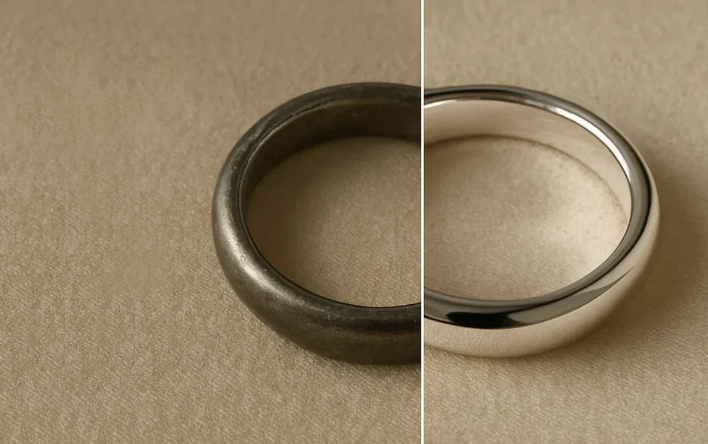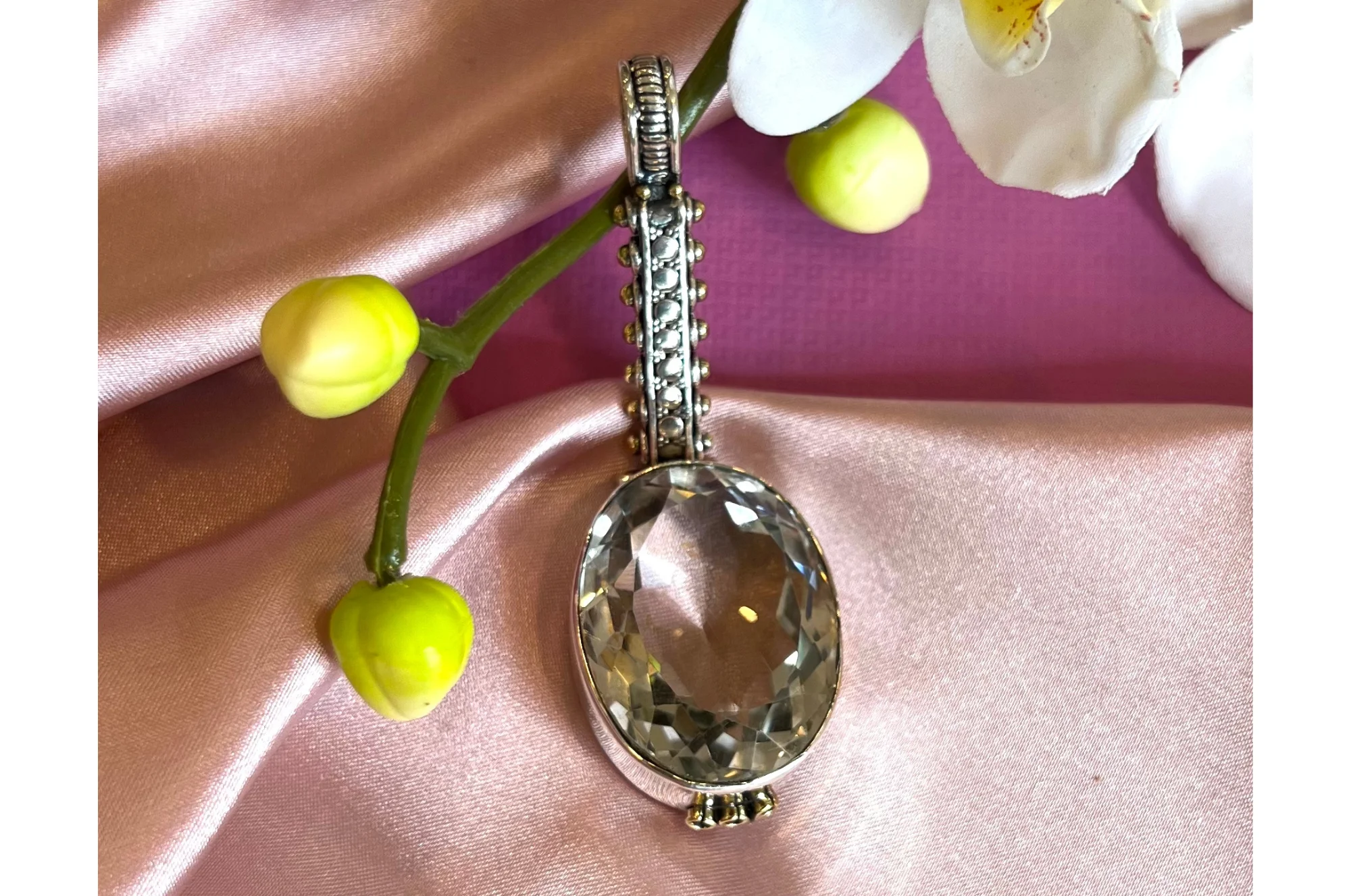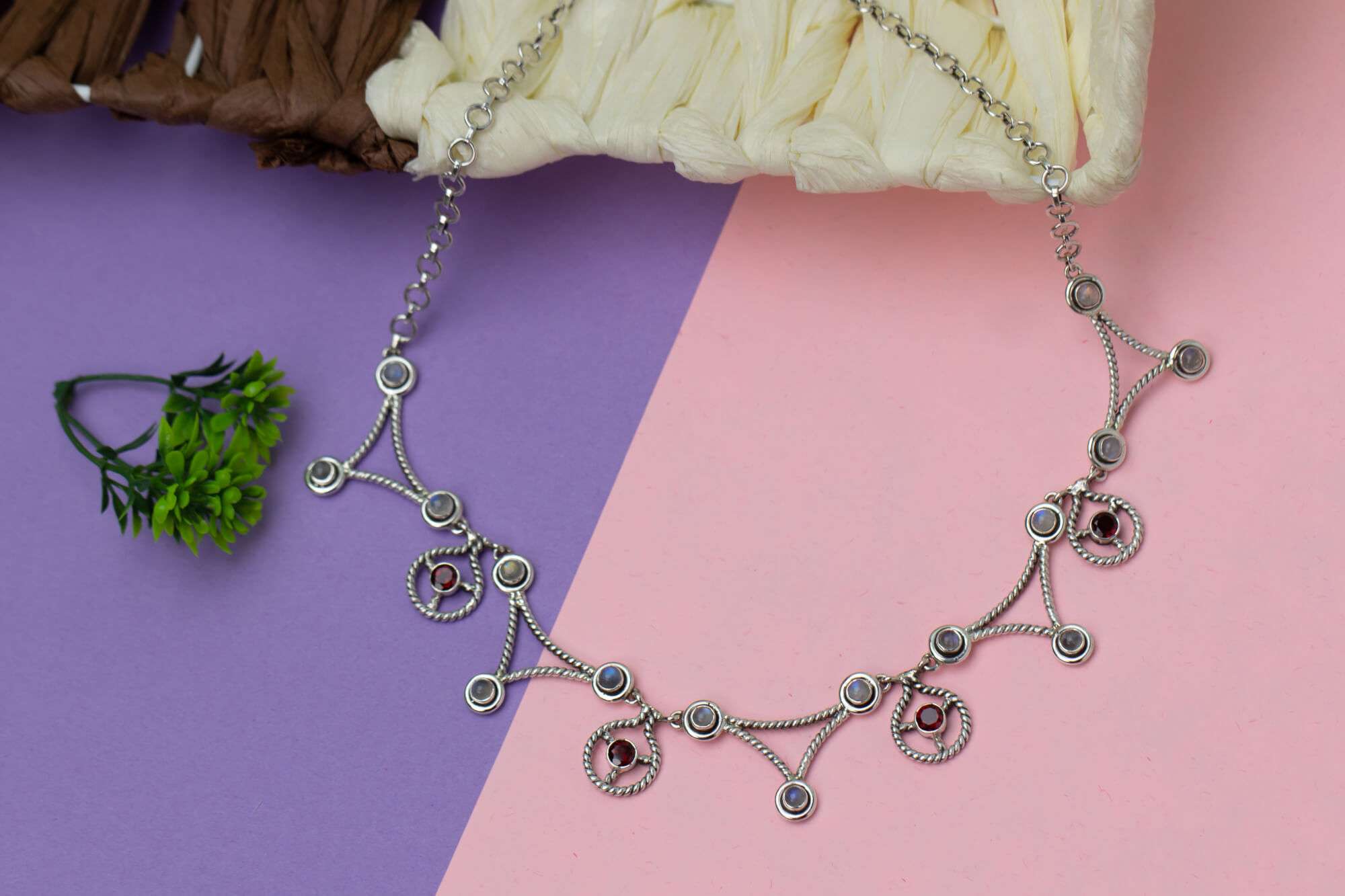
Silver is a metal that has captured the imagination and adorned countless generations with its lustrous charm. Known for its radiant sheen and enduring beauty, it is more than just a material; it’s a testament to the timeless elegance and craftsmanship in jewelry, silverware, and decorative arts.
Mythologically, it is often associated with the moon, whereas gold was associated with the sun. This lunar connection gave silver a certain mystical and astrological significance.
It’s no wonder that silver is seen as a symbol of purity, clarity, and focus. These qualities are instantly endowed to whoever wears this precious metal!
While the allure of sterling silver lies in its mystical and aesthetic qualities, it’s equally crucial for enthusiasts and collectors to understand its physical properties and practical aspects. Questions like “What exactly does ‘sterling’ mean in Sterling Silver?” and “Does sterling silver tarnish?” are key to appreciating and maintaining its beauty.
In this blog, we dive deep into these aspects, unraveling the practical mysteries behind the elegance of sterling silver.
But before we understand sterling silver and why it’s best to use in ornaments and jewelry, an important question must be answered that is on everyone’s mind.
Is Sterling Silver Real Silver?
Yes, sterling silver is indeed real silver. Sterling silver is only an alloyed form of silver with increased reliability and resilience. Keep on reading to find out more about this fascinating metal!
What Is Sterling Silver?
Sterling silver is a stronger, more durable cousin of pure silver. Pure silver, which is 99.99% silver, is prone to deforming while molding for any practical use, including making jewelry. This is because in its pure form silver is too soft and malleable.
Sterling silver solves that problem while retaining pure silver’s shine and color. How does it do that? Sterling silver is 92.5% silver with 7.5% copper mixed in it. This allows silver to take on the durable qualities of copper while retaining its beauty and elegance.
Check out House of Alkara’s Sterling Silver products which are also nickel-free
Sterling silver is also known as “925 silver”. That is why you will see our silver products hallmarked with the “925” stamp.
Is Sterling Silver Prone To Tarnish?
Tarnishing is a chemical reaction that occurs on the surface of metal, including sterling silver. It’s a form of corrosion but differs from rusting, which you see on iron and steel. When sterling silver tarnishes, it develops a thin layer of corrosion that usually looks black or gray. This tarnish is actually silver sulfide, a compound formed when silver reacts with sulfur or hydrogen sulfide in the air.
Why Does Sterling Silver Tarnish?
Exposure To Air and Humidity
The primary cause of tarnishing is exposure to air, especially humid air. The moisture in the air accelerates the tarnishing process.
Contact With Everyday Substances
Regular handling and contact with substances such as sweat, oils from the skin, cosmetics, perfumes, and even food can speed up the tarnishing process. Sulfur compounds found in some foods (like eggs) and industrial pollutants can also react with sterling silver.
Storage Conditions
Poor storage conditions, like keeping silver in open or humid areas, can lead to quicker tarnishing.
But Wait, Is Tarnishing On Sterling Silver Reversible?
Unlike rust, tarnishing is a superficial change and does not affect the underlying metal’s integrity. It is a reversible reaction, meaning the tarnish can be removed, and the silver can be restored to its original luster with proper cleaning methods.
How To Fix Tarnishing On Sterling Silver?
To reverse tarnishing on sterling silver, begin by gently washing the item with warm water and mild dish soap to remove any surface dirt. Pat dry with a soft cloth.
For mild tarnish, use a silver polishing cloth in a back-and-forth motion, not circular, to avoid deepening any scratches.
How To Remove Stubborn, Deep Tarnishing From Your Sterling Silver Jewelry?
Sometimes tarnishing can be hard to remove and the above methods may not work. In that case, apply a paste of baking soda and water, or use a commercial silver polish following the manufacturer’s instructions. Rinse thoroughly and dry.
Avoid using abrasive materials to prevent scratching. Regular maintenance, proper storage, and minimal exposure to harsh chemicals can help keep your sterling silver bright and tarnish-free.
Conclusion
We hope this blog helps you understand more about your favorite silver jewelry! It’s vital to know how to properly take care of your jewelry. Because your jewelry is just not a piece of metal, rather it is a statement to the world of your values and beliefs.
The qualities of purity, clarity and focus that are represented by this lustrous and timeless metal are ever more important for the world today! When you adorn yourself with radiant sterling silver, you are embracing these qualities and making the world a better place.







